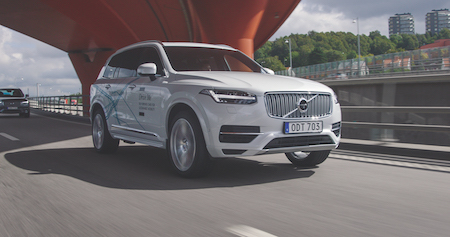In determining the national strategy for AI, NITI Aayog’s main priority was to identify applications with maximum social impact, learning from the best of the world in regards to recent technological advancements in AI, and leveraging approaches that democratise access to AI.
Applications in India
The approach has been to identify sectors that most require the government to directly develop an implementation roadmap for AI, so that regulatory frameworks can be created engaging with the correct stakeholders. Such industries that can provide huge societal benefits through the adoption of AI include:
- Healthcare: increased access and affordability of quality healthcare
- Agriculture: enhanced farmers’ income, increased farm productivity and reduction of wastage
- Education: improved access and quality of education
- Smart Cities and Infrastructure: efficient and connectivity for the burgeoning urban population
- Smart Mobility and Transportation: smarter and safer modes of transportation and better traffic and congestion problems
China and the UK estimate that 26% and 10% of their GDPs respectively in 2030 will be sourced from AI-related activities and businesses. In recent years, policy positions of countries around the world have been published – the US released its AI report in December 2016; France published its AI strategy in January 2017; Japan, China, and the UK all released reports throughout the year 2017.
The three components that drive the strategy for India are:
- Opportunity: the economic impact of AI for India
- AI for Greater Good: social development and inclusive growth
- AI Garage for 40% of the world: solution provider of choice for the emerging and developing economies (excluding China) across the globe
These have been devised to make sure that the AI policy framework is based on India’s unique needs and strengths, and is capable of leveraging the full potential of AI in India.
Barriers
Many barriers to AI adoption may appear to be limited to the specific sectors. With healthcare as an example, large scale adoption of AI requires the following factors to be addressed:
- absence of collaborative effort between various stakeholders: while India has adopted electronic health record (EHR) policy, sharing of data between various hospital chains still remains a work in progress, since different hospital chains have adopted different interpretations of “digitising records”;
- relevant data is unavailable and there is absence of robust open clinical data sets; and
- concerns on privacy and security of data, including lack of formal regulation around anonymisation of data.
However, across all five sectors, the challenges that each one faces are concentrated across distinct, common themes. The barriers that NITI Aayog have identified are:
- Lack of broad based expertise in research and application of AI
- Absence of enabling data ecosystems – access to intelligent data
- High resource cost and low awareness for adoption of AI
- Privacy and security, including a lack of formal regulations around anonymisation of data
- Absence of collaborative approach to adoption and application of AI
Appropriate handling of data, ensuring privacy and security, is incredibly important in developing an AI framework. Protection of data to ensure that it is not used without the owner’s consent, identification through data, data selection bias, are all issues that encompass the data challenge, which needs to be addressed as it is AI’s main resource. Full implementation of data protection frameworks is recommended by NITI as well as promotion of adoption of international standards.
Intellectual property
For India to become a hotbed of AI innovation, it requires a new, more robust intellectual property framework. According to the Global Intellectual Property Centre’s intellectual property index of 2018, India ranked 45 out of 50 countries. Its score of 12.03 improved on the previous year’s score of 8.75. This is due to efforts to bring its IP regulations up to speed in a push to boost entrepreneurship in India as part of prime minister Narendra Modi’s “Make in India” and “Startup India” initiatives. In 2016 the government’s National Intellectual Property Rights Policy formed the foundations for a more robust legal framework that would comply with global standards in order to reduce copyright infringement. Trademarks have also been made easier to register online, also reducing the 13-month review period to eight months, with a further view to bringing that wait down to just one month.
Actions
NITI Aayog has highlighted some of the measures that India’s government can take to tackle some of the barriers to AI adoption. In order to make India a global centre of AI research, a dual framework to promote both core and applied research is proposed:
- COREs (Centres of Research Excellence in Artificial Intelligence), which will focus on core research of AI, specialise in creating new knowledge through basic research and will source for fundamental knowledge that will be needed to keep India prepared for the next generation of technologies. COREs will also engage with development infrastructure tools for direct application of basic research, including development of new areas of AI architecture.
- ICTAIs (International Centres for Transformational Artificial Intelligence), which will provide the eco-system for application based technology development and deployment. It will be an industry-led initiative and is expected to take on the top-level challenges identified or inter-ministerial projects calling for AI-based solutions. Furthermore, ICTAIs would also be responsible for delivering commercial technology, and taking concepts or prototypes and turning them into marketable products by way of proactive coordination, communication and interfacing for technology transfer to the industry.
Establishment of IP facilitation centres is also highlighted as a measure to tackle the IP problems, in an effort to bridge the gap between practitioners and AI developers, while ensuring that the patent laws are not too narrow-focussed and stringent when applied to AI, given its unique developmental position.
It has also recommended that “moonshot” ideas are pursued – ambitious projects that aim to push the technology frontier, which would necessarily require world class personnel, equipment, and knowledge. Some experts believe that moonshot ideas should be pursued by the private sector instead of through government initiatives, as they already have the requisite resources and expertise to bring them to completion, but NITI sees the inherent risk involved in them as being ill-suited to the functioning of most corporations. For these moonshot ideas to succeed, the IP regulations need to be strengthened to promote entrepreneurship and innovation.
The changing nature of the global service sector provides India with a unique problem. As other countries begin to automate many skills, the jobs that have been outsourced to countries such as India will dry up (outsourcing accounts for 15% of India’s total workforce). Poor infrastructure will pose a significant challenge to a population needing to up-skill or retrain. Government-led initiatives to incentivise retraining will be necessary to account for this loss of workforce, and this can be done by standardising informal training institutions, given that many people in India have already recognised the potential of AI and have begun training in informal centres; creation of financial incentives for companies for reskilling employees in the IT industry; creation of open-source platforms for learning; and incentivising creation of jobs that could constitute the new service industry to replace those IT jobs that will be lost, which will be involved in the new AI solution development value chain.


.jpg)
.jpg)
.jpg)

.jpg)

.jpg)


.jpg)